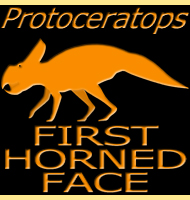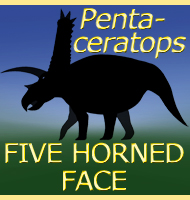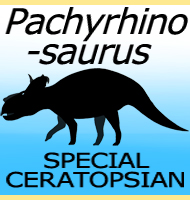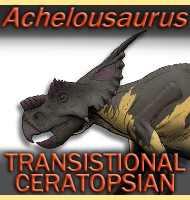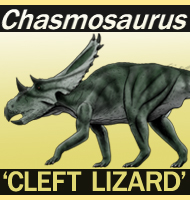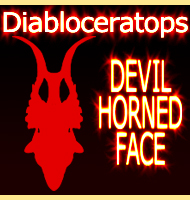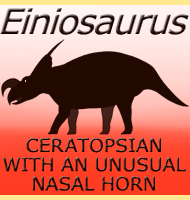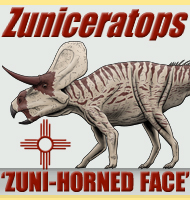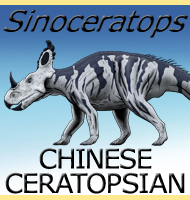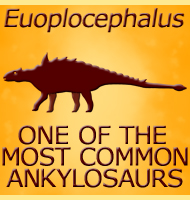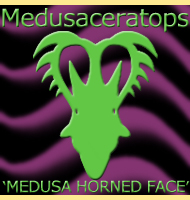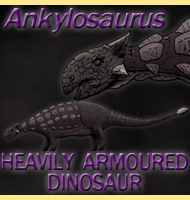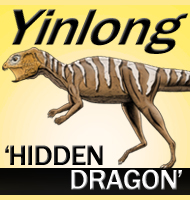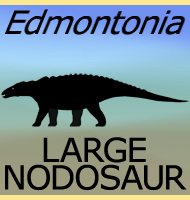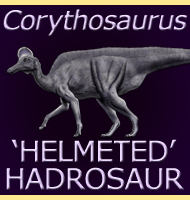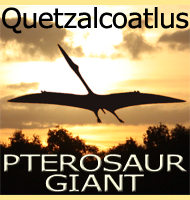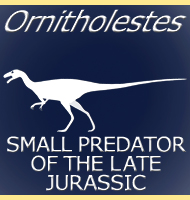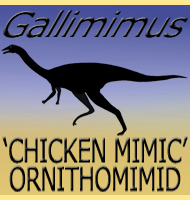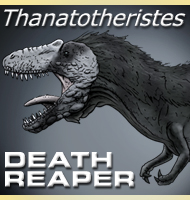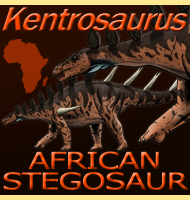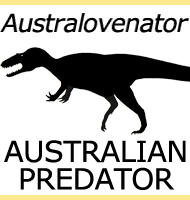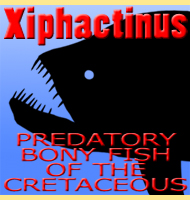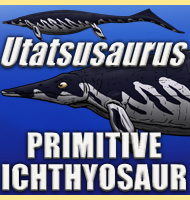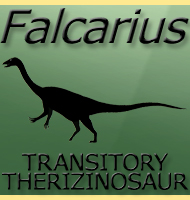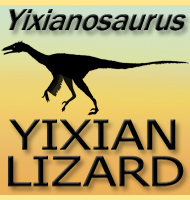


Triceratops
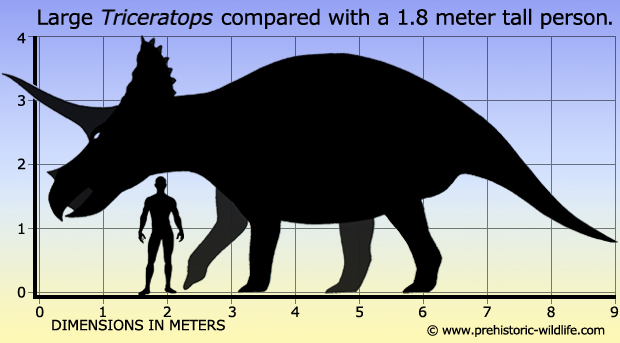
Name:
Triceratops (Three horned face).
Phonetic: Tri-seh-rah-tops.
Named By: Othniel Charles Marsh - 1889.
Synonyms: Bison alticornis,
Sterrholophus,
Ugrosaurus.
Possible additional synonyms:
Claorhynchus, Diceratus (synonym of Nedoceratops),
Nedoceratops, Ojoceratops, Tatankaceratops, Torosaurus?.
Species synonyms: T. brevicornus, T.
calicornis, T. elatus, T. flabellatus, T. mortuarius,
T. obtusus, T. serratus, T. sylvestris.
Classification: Chordata, Reptilia, Dinosauria,
Ornithischia, Ceratopsia, Ceratopsidae, Chasmosaurinae,
Triceratopsini.
Species: T. horridus (type),
T.
prorsus.
Dubious species: T. albertensis, T.
alticornis, T. eurycephalus, T. galeus, T. hatcheri, T.
ingens, T. maximus, T. sulcatus.
Diet: Herbivore.
Size: Estimated between 8 to 9 meters long.
Known locations: USA, Colorado, Montana, South
Dakota, Wyoming. Canada, Alberta, Saskatchewan.
Time period: Late Maastrichtian of the Cretaceous.
Fossil representation: Multiple remains, some of
almost complete individuals.
When it comes to popularity Triceratops is only eclipsed by Tyrannosaurus, and even then there are a considerable portion of people who actually prefer Triceratops over the aforementioned apex predator. Yet despite its frequent depiction from toys to dinosaur books, films and other media, there is still a lot of controversy and misconception surrounding this much loved dinosaur.
How Triceratops
looked in life
Triceratops
is one of the few dinosaurs that hardly need a description. Like with
other large ceratopsian
dinosaurs it was a quadrupedal (four legged)
herbivore that had a proportionately large skull in relation to its
total body size, just under a third of the total length. The skull
was adorned with a short neck frill that rose up from the back, and
three horns. The largest horns were the two that rose up from above
the eyes and reached up to one meter long, while the nasal horn that
pointed up from the snout was much smaller. Some specimens of
Triceratops sometimes have epoccipitals (small
pointed bones) that
are attached to the edge of the frill. Triceratops
was once classed
as a centrosaurine ceratopsian dinosaur because of this small frill,
but today it is considered to be a chasmosaurine (often
alternatively referred to as ceratopsine) on the basis of the
well-developed brow horns that are usually greatly reduced or absent in
centrosaurines. The frill itself is still interesting because its
short and solid which makes it very different from other known genera
that usually have long frills with holes in them. However this
feature may yet have greater ramifications for Triceratops
and some
other ceratopsian dinosaur genera (click to skip down to this).
Like
with other ceratopsian dinosaurs there has been some confusion as to
how Triceratops stood and walked. Earlier
reconstructions took into
account the large skulls with the idea that the fore legs would have to
sprawl out to the sides to support the bulk. Track ways suggested
different however, that the fore legs were not sprawled which led to
the question of ‘did Triceratops have sprawling
or upright legs?’.
The simple answer is a little of both as modern reconstructions
including computer modelling have revealed that the fore legs were
upright but with the elbows bowed out to the sides.
Another
interesting feature is the way the fore feet (equivalent to your
hands) rested on the ground. Unlike thereophorans (stegosaurs and
ankylosaurs) and sauropods (quadrupedal long necked dinosaurs)
the fingers pointed out to the sides rather than facing forwards.
Although a primitive trait this actually reveals that the direct
ancestors of the large late Cretaceous ceratopsian dinosaurs were
actually bipedal (walked upon two legs) with their hands more for
grasping and support rather than weight bearing.
One
of the most exciting discoveries associated with Triceratops
is a skin
impression which also reveals the presence of bristle like fibres.
Although this may appear strange, especially to those who have grown
up with images of Triceratops being a relatively
smooth skinned
creature, earlier ceratopsians are thought to have had bristle like
extensions on areas like the tail. This has been confirmed by some
fossils from China and is especially poignant considering that the
popular consensus is that primitive ceratopsian dinosaurs first
appeared here towards the end of the Jurassic period. If these
bristle structures were indeed present upon Triceratops,
then it’s
also plausible that other ceratopsian dinosaur genera between it and
the primitive forms may have also had them.
Ecological niche
The
large number of Triceratops remains has led to
speculation that this
dinosaur was the dominant herbivore of Late Cretaceous North America.
Other plant eating dinosaurs did exist however, including the much
smaller ceratopsian Leptoceratops.
Triceratops would have been a
browser of low growing vegetation although there has been speculation
that it may have brought down larger plants to feed up vegetation that
would otherwise have been out of reach. Although destructive, this
would have been quite an easy feat for such a large and presumably
heavy animal.
The
front of the mouth was arranged in the form of a beak, although the
idea that it was used to shear off plant parts has fallen out of favour
with most considering that it was most likely used for gripping and
pulling. The teeth at the back of the mouth were arranged in shearing
batteries. Like with other dinosaurs (including meat eaters)
there were always replacement teeth growing in columns beneath the
tooth that was exposed and processing food in the mouth. Once a tooth
had become damaged or worn, the one beneath it would push it out and
replace it, eventually being replaced itself when it to became worn.
This constant replacement is why dinosaur teeth are some of the most
common fossils available to buy on the market.
Because
of its large size Triceratops would have been
fairly safe from attack
by the smaller predators of the time such as Troodon.
Therefore the
only creatures that could feasibly be a threat to it were equally large
predators such as Tyrannosaurus and Albertosaurus,
although even
these would have probably preferred to take a smaller juvenile or a
sick or injured individual that could not defend themselves as easily.
Behaviour and social interaction
The
features that Triceratops is most famous for are
the horns and frill,
as well as the possibility that they may have been weapons so that
rather than running away from predators it could hold its ground and
fight. Although this is by far the most popular notion it is not
actually universally accepted amongst palaeontologists as the sole
reason. The problem comes from the fact that while all ceratopsians
have neck frills, and many of them had horns as well, they were
very different amongst different genera. Logic would dictate that if
they were just for fighting predators, the design would become
standardised to its most effective form.
There
is but one theory that explains the variance in frill shapes and
horns: display. By having different frill and head shapes a certain
genus of ceratopsian dinosaur could identify others of its species
rather than get confused and try to mate with a different species.
Many frills also bear the impressions of blood vessels that may have
allowed Triceratops and other ceratopsian dinosaurs
to flush blood into
the soft tissue that covered their bony frills to produce vivid colour
displays. The horns may have still been used in fighting, but
rather than goring an attacking predator, they may have been locked
with a rival Triceratops in a form of
‘fencing’. Holes in some
Triceratops frills have been interpreted as being
caused by the points
of another Triceratops, and while alternative
interpretations have
suggested that they may have been caused by a parasitic infection or
disease, further study has found them to be quite localised and
unlikely to be caused by the randomness of an ailment. As such while
the potential of the horns being turned against a predator is there,
the horns were more likely used for display and intraspecific combat
with rivals.
Triceratops
has been frequently depicted as being a herding animal despite the fact
that to date there is no definitive evidence to prove this. Other
ceratopsians such as Centrosaurus
and Styracosaurus
have been found in
bone beds that number hundreds of individuals which has been taken to
some to be a sign of living in herds (although there are alternative
arguments to this idea). With a noted exception of three juvenile
Triceratops being found together all other remains
seem to have come
from solitary individuals. Another thing to consider against the
large herd idea is the fact that Triceratops were
not small creatures,
and would have needed a substantial amount of plant matter to fuel
their bodies. Multiply this by several hundred individuals in a herd
and it’s easy to appreciate that Triceratops
would have had a massive
impact upon the ecosystems of Late Cretaceous North America.
However
the idea that Triceratops lived mostly solitary
lives is also unlikely
when you look at the evidence and think about ecosystems in general.
First is that Triceratops appears to have been the
most common
ceratopsian, and possible even most common large herbivorous dinosaur
during the Late Cretaceous of North America which would suggest that
Triceratops frequently stumbled upon one another in
their travels.
Second is that the largest herbivores today such as elephants can be
seen to travel in both groups (of females and juveniles) and
singles (mature males). Finally is the recognition that large
predatory dinosaurs like Tyrannosaurus were
potentially capable of
taking down a fully grown Triceratops, but would
themselves have a
near impossible time of attacking a group of Triceratops
that had
clustered together for defence.
It
is not inconceivable that Triceratops may have
formed small groups
perhaps where a harem of females were watched over by a single male
that held dominance over a group. Periodically roaming males may have
challenged this male for control of the harem, using their frills and
horns to gesture and display their strength to each other, perhaps
even locking horns and fighting. The dominant male would win the
right to mate with the harem females and pass on its genes, while the
loser would have to wander alone where it would also be at greater risk
of attack from predators. This is of course speculation, but this
and similar systems can be observed in other animals today.
Early discovery and the many
species of Triceratops
Triceratops
was actually first named as Bison alticornis because Othniel Charles
Marsh thought that he was dealing with a Pliocene era species of
Bison. Two years later with the advent of more fossils including a
more complete skull, Marsh created the genus Triceratops.
The horns
referred to as Bison alticornis were referred to the earlier Ceratops
genus that had also been established by Marsh, but later these too
would be included with Triceratops.
Throughout
the twentieth century more and more remains of Triceratops
were
recovered to the point where the genus became one of the most common
ceratopsian dinosaurs from North America. However many of these
remains showed variation between the skulls of individuals which led
to the establishment of lots of species to the genus. Towards the end
of the twentieth century however, palaeontologists had grown
suspicious over the validity of these species and a 1986 paper by
Ostrom and Wellnhofer concluded that only the type species of T.
horridus was valid. The popular notion was that the
variations
between skull specimens were all down to individual variation as well
as distortion during preservation (remembering that fossils are often
formed during exposure to immense subterranean pressures).
Later
study by Catherine Forster found clear difference between T.
horridus
and T. prorsus, as well as another species T.
hatcheri being a
different genus that was named Nedoceratops (as Nedoceratops
hatcheri
based from the original species). Although the differences have
been taken to represent possible sexual dimorphism, palaeontologists
Denver Fowler and John Scannella have noted that while these two
species have been found in the same locations as one another, they
are found in different levels of strata. This means that they were
active at different times to one another and are therefore more likely
to be different species.
Other
ceratopsian genera such as Ojoceratops,
Eotriceratops and
Tatankaceratops
amongst others have been assigned by some
palaeontologists as potential synonyms to Triceratops.
This is
dubiously accepted as not all palaeontologists are in agreement to the
validity of these genera, although most famous and controversial is
the theory regarding the connection of Triceratops
to Torosaurus.
The Triceratops/Torosaurus
debate
In
2010 news channels on the internet as well as some printed
newspapers were abuzz with a newly proposed theory that was put forward
by John Scannella (first proposed in 2009) which stated that
Triceratops was the same as another dinosaur named Torosaurus.
Although most reported on the facts of the case, but some news
sources that couldn’t be bothered with accurate reporting decided to
over sensationalise the story with headlines such as ‘Triceratops
never existed’ and ‘Triceratops not real’.
The
theory that was co-authored by the palaeontologist Jack Horner is
relatively simple to understand. Triceratops and Torosaurus
are both
known from many of the same fossils sites as one another (although
there are some exceptions), and from the same time periods.
Triceratops has a short solid frill that is unusual
for such a large
ceratopsian dinosaur, especially an adult. Torosaurus
has a more
standard frill which is elongated and has fenestrae (holes) to
reduce the weight of the growth. The conclusion is therefore that the
skulls named as Triceratops represent the juvenile
form, while the
Torosaurus skulls represent the mature adult form of
the same horned
dinosaur.
Needless
to say this is a very controversial proposal but one that is grounded
in a lot of research and observational study of available fossils.
The first thing that needs to be considered is that fact that
ceratopsian dinosaur frills are made up of what is called metaplastic
bone which changes in shape and form as the dinosaur reaches maturity.
Another fact is that genera of ceratopsian dinosaurs which are known
by both juvenile and mature adult forms all indicate that juveniles
have shorter solid frills that develop into larger and longer frills
with fenestra in later life. This is the key point in that as far as
Triceratops is concerned if adults only had a short
solid frill then
the genus would actually be the exception to other known forms. An
extension of the theory concerns sexual dimorphism, were the solid
short frilled skulls are of females and immature males, and the large
frilled skulls are of mature males that developed the frill to display
to and attract females.
Other
palaeontologists have so far had a hard time accepting this theory
however, with one of the better documented arguments against
coming from Andrew A. Farke in 2011. As part of the original
theory Scannella and Horner not only proposed that Torosaurus
was a
synonym to Triceratops but another genus named Nedoceratops
was also a
synonym. Additionally they suggested that the single skull that had
been attributed to Nedoceratops had a skull that
was intermediate in
development of the shorter Triceratops form, and
the larger
fenestrated Torosaurus form. Farke however in a
re-study of the
Nedoceratops remains not only concluded that the
skull represented a
single genus, but that the theory that Triceratops
skulls could morph
into Torosaurus skulls with age was simply unknown
amongst ceratopsians
as too much change was required.
A
more recent report (at least at the time of writing) is a 2012
study by Daniel Field and Nicholas Longrich of Yale University.
Field and Longrich studied thirty-five specimens and found that the
skulls represented juvenile Torosaurus and mature Triceratops,
and
that there is a distinct lack of transitional forms that show a short
frilled Triceratops maturing into a long frilled Torosaurus.
Field
and Longrich have acknowledged the existence of fossils that have been
interpreted as being transitional forms, but explained them as being
the products being caused by other factors. It has also been noted
again that there are some locations where only one of the genera have
been found, although this neither supports nor disproves the theory
that Triceratops and Torosaurus
are the same. Scannella has responded
in news reports that this study does not disprove the idea that
Triceratops and Torosaurus are
the same, again citing fossils that
could be seen as being transitional.
What
this all comes down to is a matter of interpretation of the fossils by
different individuals who all have their own ideas. The history of
palaeontology has seen many theories developed by individual
interpretations, some being confirmed by future discoveries and
techniques, some being completely discredited. With a large amount
of Triceratops and Torosaurus
remains being known and presumably many
more waiting to be dug from the ground, it may be only a matter of
time before this theory is conclusively proven one way or the other.
Other palaeontologists have been more cautious in their approach on
the subject, but continue to watch and study the proceedings
intensely to take on board future developments.
Regardless,
of what may happen in the future, Triceratops
will not cease to
exist for one simple reason. Triceratops was
named as a genus in
1889, while Torosaurus was not named until
1891. Under
international rules governing the naming of animals, the first name
always has priority over any subsequent naming. This famously
happened with Brontosaurus and Apatosaurus,
the former being raised
in popular culture despite palaeontologists of the time already
treating it as a synonym to Apatosaurus. The only
chance that an
exception could be made for this is if it can be proven that
Triceratops has rarely appeared in print while Torosaurus
was the
vastly better known dinosaur, which quite frankly would be impossible
to establish since most people do actually know what a Triceratops
actually is, but would probably draw a blank when asked about a
Torosaurus.
Further reading
- Notice of new fossil mammals - American Journal of Science 34:
323–331 - Othniel Charles Marsh - 1887.
- A new family of horned Dinosauria, from the Cretaceous - American
Journal of Science 36: 477–478 - Othniel Charles Marsh - 1888.
- Notice of new American Dinosauria - American Journal of Science 37:
331–336 - Othniel Charles Marsh - 1889a.
- Notice of gigantic horned Dinosauria from the Cretaceous - Othniel
Charles Marsh - 1889b.
- Mounted skeleton of Triceratops prorsus in the
Science Museum -
Scientific Publications of the Science Museum 1: 1–16 - B. R. Erisckdon
- 1966.
- The behavioral significance of frill and horn morphology in
ceratopsian dinosaurs - Evolution 29 (2) - J. O. Farlow & P.
Dodson - 1975.
- Mechanics of posture and gait of some large dinosaurs - Zoological
Journal of the Linnean Society 83: 1–25 - R. M. Alexander - 1985.
- The Munich specimen of Triceratops with a
revision of the genus -
Zitteliana 14: 111–158 - J. H. Ostrom & P. Wellnhofer - 1986.
- Late Maastrichtian paleoenvironments and dinosaur biogeography in the
Western Interior of North America - Palaeogeography, Palaeoclimatology
and Palaeoecology 60 (3): 290 - T. M. Lehman - 1987.
- The cranial morphology and systematics of Triceratops,
with a
preliminary analysis of ceratopsian phylogeny. - Ph.D. Dissertation.
University of Pennsylvania, Philadelphia. 227 pp. - C. A. Forster -
1990.
- Bite marks attributable to Tyrannosaurus rex:
preliminary description
and implications - Journal of Vertebrate Paleontology 16 (1): 175–178.
- G. M. Erickson & K. H. Olsen - 1996.
- Species resolution in Triceratops: cladistic and
morphometric
approaches - Journal of Vertebrate Paleontology - C. A. Forster - 1996.
- Limb bone scaling, limb proportions, and bone strength in
neoceratopsian dinosaurs - Gaia 16: 13–29 - P. Christiansen &
G. S. Paul - 2001.
- Horn Use in Triceratops (Dinosauria:
Ceratopsidae): Testing
Behavioral Hypotheses Using Scale Models - Palaeo-electronica 7 (1):
1–10 - A. A. Farke - 2004.
- The smallest known Triceratops skull: new
observations on ceratopsid
cranial anatomy and ontogeny - Journal of Vertebrate Paleontology 26
(1) - M. B. Goodwin, W. A. Clemens, J. R. Horner & K. Padian -
2006.
- Evidence of Combat in Triceratops - In Paul
Sereno. PLoS ONE 4 (1) -
A. A. Farke, E. D. S. Wolfe, D. H. Tanke & P. Sereno - 2009.
- The first Triceratops bonebed and its
implications for gregarious
behavior - Journal of Vertebrate Paleontology 29 (1): 286–290 - Joshua
C. Mathews, Stephen L. Brusatte, Scott A. Williams & Michael D.
Henderson - 2009.
- Triceratops and Torosaurus
dinosaurs 'two species, not one - Journal
of Vertebrate Paleontology 29 (4): 1136–1147 - S. -I. Fujiwara - 2009.
- Anagenesis in Triceratops: evidence from a newly
resolved
stratigraphic framework for the Hell Creek Formation - 9th North
American Paleontological Convention Abstracts. Cincinnati Museum Center
Scientific Contributions 3. Pp. 148–149 - J. B. Scanella & D.
W. Fowler - 2009.
- Torosaurus Marsh, 1891, is Triceratops
Marsh, 1889 (Ceratopsidae:
Chasmosaurinae): synonymy through ontogeny - Journal of Vertebrate
Paleontology 30 (4): 1157–1168 - J. Scannella & J. R. Horner -
2010.
- Ontogeny of the parietal frill of Triceratops: a
preliminary
histological analysis - Comptes Rendus Palevol 10: 439–452 - J. R.
Horner & E. Lamm - 2011.
- Torosaurus Is Not Triceratops:
Ontogeny in Chasmosaurine Ceratopsids
as a Case Study in Dinosaur Taxonomy - PLoS ONE 7(2) - N. R. Longrich
& D. J. Field - 2012.
- Evolutionary trends in Triceratops from the Hell
Creek Formation,
Montana. - Proceedings of the National Academy of Sciences. 111 (28):
10245–10250. - John B. Scannella, Denver W. Fowler, Mark B. Goodwin
& John R. Horner - 2014.
----------------------------------------------------------------------------
Random favourites
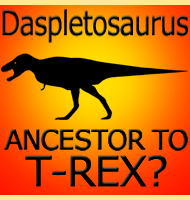 |
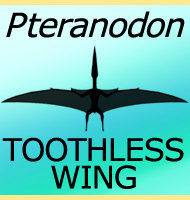 |
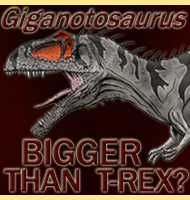 |
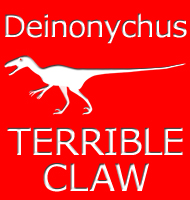 |
